Capital Gains Tax is one of the major taxes involved with real estate, and we’ll cover the essentials below.
Introduction
Taxes are indeed inescapable and the real estate industry is no exception. I am sure a lot of real estate investors are very much interested to know the taxes involved in investing as they significantly impact the total cost of acquiring a property.
What may seem like a good deal may turn out to be a bad one, if all the taxes are factored in. So before you go ahead and plunge into the world of real estate investing, I suggest you take the time to study taxes. For this post, I will be discussing capital gains tax on real estate.
I’ll try to discuss capital gains tax on real estate in layman’s terms, based on what I have learned, for purposes of information-sharing. A disclaimer is in order of course: While great effort has been taken to ensure the accuracy of the discussion here as of its writing, this is not intended to replace seeking professional services. Do read up on the relevant laws and regulations also.
Capital Gains Tax vs. Income Tax
When there is a sale of real estate, automatically people think that they have to pay Capital Gains Tax (CGT). This is not necessarily the case. CGT is a tax on the gain from the sale of capital assets. Regular corporate income tax (RCIT) [for corporations] and regular income tax [for individuals] apply to the sale of ordinary assets while CGT applies to the sale of capital assets.
Thus, we first have to determine whether the asset being sold is a capital or an ordinary asset so as to know the proper tax rate to be used and the BIR form to be used, among others.
Capital assets vs. Ordinary assets
The term “capital assets” is defined negatively in Section 39(A)(1) of the Tax Code as follows:
“(1) Capital Assets. – the term ‘capital assets’ means property held by the taxpayer (whether or not connected with his trade or business), but does not include
• stock in trade of the taxpayer or other property of a kind which would properly be included in the inventory of the taxpayer if on hand at the close of the taxable year, or
• property held by the taxpayer primarily for sale to customers in the ordinary course of his trade or business, or
• property used in the trade or business, of a character which is subject to the allowance for depreciation provided in Subsection (F) of Section 34;
• or real property used in trade or business of the taxpayer.”
As applied to the real estate industry, the terms “capital assets” and “ordinary assets” are defined in Section 2(c) of Revenue Regulations (RR) No. 7-2003 dated December 27, 2002. It’s essentially the same as the above definition.
It has an additional provision, though, on real properties acquired by banks through foreclosure sales – the same are considered as their ordinary assets but banks shall not be considered as habitually engaged in the real estate business for purposes of determining the applicable rate of expanded withholding tax.
Since we are talking about the sale of real property here, we need to know the definition of “real property”. Section 2(c) of RR No. 7-2003 states that “Real property shall have the same meaning attributed to that term under Article 415 of Republic Act No. 386, otherwise known as the “Civil Code of the Philippines.” Article 415 of the Civil Code provides:
“Art. 415. The following are immovable property:
(1) Land, buildings, roads and constructions of all kinds adhered to the soil;
(2) Trees, plants, and growing fruits, while they are attached to the land or form an integral part of an immovable;
(3) Everything attached to an immovable in a fixed manner, in such a way that it cannot be separated therefrom without breaking the material or deterioration of the object;
(4) Statues, reliefs, paintings or other objects for use or ornamentation, placed in buildings or on lands by the owner of the immovable in such a manner that it reveals the intention to attach them permanently to the tenements;
(5) Machinery, receptacles, instruments or implements intended by the owner of the tenement for an industry or works which may be carried on in a building or on a piece of land, and which tend directly to meet the needs of the said industry or works;
(6) Animal houses, pigeon-houses, beehives, fish ponds or breeding places of similar nature, in case their owner has placed them or preserves them with the intention to have them permanently attached to the land, and forming a permanent part of it; the animals in these places are included;
(7) Fertilizer actually used on a piece of land;
(8) Mines, quarries, and slag dumps, while the matter thereof forms part of the bed, and waters either running or stagnant;
(9) Docks and structures which, though floating, are intended by their nature and object to remain at a fixed place on a river, lake, or coast;
(10) Contracts for public works, and servitudes and other real rights over immovable property.”
Thus, it appears that it is not only the sale of land and buildings or houses which we should be focusing on, but also the sale of the above.
As RR No. 7-2003 is a very important rule on real estate, I have included the said regulations in this post for your reference. Read it in its entirety. You may download a copy here. Answers to frequently asked questions can be found in this document.
In simple terms, if the property is not ordinarily held for sale (as inventory) or used in business and subject to depreciation, then the property is a capital asset. Now, if a seller is engaged in the real estate business, and the property is one he holds out for sale to the public, then the property may be considered as an ordinary asset.
[Note that there may be instances when a seller is engaged in the real estate business but the property is not held for sale or used in business or was idle for a long time – this is one of the instances when the property may be considered a capital asset.]
Conversely, if a seller is not engaged in the real estate business, and the property is not used in business and subject to depreciation, the property may be considered as a capital asset, the sale of which is subject to CGT.
Section 3 of RR No. 7-2003 provides the Guidelines in Determining Whether a Particular Real Property is a Capital Asset or Ordinary Asset.
Tax Rate to be Used
When the real property which is a capital asset to the seller is sold, the gross selling price or fair market value (FMV) [zonal value], whichever is higher, will be subject to 6% CGT. Please refer to the BIR website http://www.bir.gov.ph/index.php/zonal-values.html for the zonal values.
Technically, it’s not really only the gain (selling price less cost) which is taxed, because even if the seller suffered a loss (that is, the selling price is lower than the original acquisition cost of the property), there will still be CGT, because a gain is always presumed.
On the other hand, if the seller is engaged in the real estate business, and the real property sold is an ordinary asset, the sale will be subject to RCIT [or minimum corporate income tax (MCIT), when applicable] if the taxpayer is a corporation and income tax if the seller is an individual.
The proceeds from the sale of the real property will be included in the seller’s global income (meaning income from all sources – note that domestic corporations and resident citizens are taxed on all sources of income, whether from within or outside the country) and only the net income, after allowable deductions such as depreciation, losses, etc. will be subjected to RCIT, MCIT, or regular income tax, whichever is applicable.
Under Republic Act No. 9337, the RCIT is now 30% on net taxable income (beginning on January 1, 2009, down from 35%). The regular income tax for individuals remains at 32%.
Please note that there is an exception to the application of the CGT, and that is the sale of a principal residence (your own home). This deserves a separate discussion as I intend to take advantage of this when we purchase our next residence.
BIR procedure
Assuming that you are interested in buying a property from a seller who is an individual and who is not engaged in the real estate business, the seller needs to pay CGT on the sale of his real property, unless you have made an agreement that you as the buyer will shoulder this.
The seller needs to file BIR Form No. 1706 within thirty (30) days after each sale, exchange, transfer or other disposition of real property. You can download BIR Form No. 1706 here.
Want to get notified when this is updated? Subscribe for free updates!
Get new/updated foreclosed listings, auction schedules, property buying tips, and more, sent straight to your email inbox. It's free!
Documentary Requirements
1 ) One original copy and one photocopy of the Notarized Deed of Sale or Exchange
2 ) Photocopy of the Transfer Certificate of Title; Original Certificate of Title; or Condominium Certificate of Title
3 ) Certified True Copy of the tax declaration on the lot and/or improvement during nearest time of sale
4 ) “Certificate of No Improvement” issued by the Assessor’s office where the property has no declared improvement, if applicable or Sworn Declaration/Affidavit of No Improvement by at least one (1) of the transferees
5 ) Copy of BIR Ruling for tax exemption confirmed by BIR, if applicable
6 ) Duly approved Tax Debit Memo, if applicable
7 ) “Sworn Declaration of Interest” as prescribed under Revenue Regulations 13-99, if the transaction is tax-exempt
8 ) Documents supporting the exemption
Additional requirements may be requested for presentation during audit of the tax case depending upon existing audit procedures.
How to Pay and File the Capital Gains Tax Return
You just have to file the Capital Gains Tax return in triplicate (two copies for the BIR and one copy for the taxpayer) with the Authorized Agent Bank (AAB) in the Revenue District where the property is located, along with the documentary requirements and the tax due.
In places where there are no AAB, the return will be filed directly with the Revenue Collection Officer or Authorized City or Municipal Treasurer. You can view the Revenue District Offices (RDO) here: http://www.bir.gov.ph/directory/rdo.htm. Click on the concerned RDO.
For example, if you click on RDO 48 – West Makati, you will get to http://www.bir.gov.ph/directory/rdoinner.htm#48. The names of the Revenue District Officer and Assistant Revenue District Officer as well as their contact numbers and e-mail addresses, and the address of the Revenue District Office and the AAB’s within the said RDO may be found there.
Sample CGT computation
A residential condominium in Makati City with a floor area of 50sqm has a Selling Price (SP) of 1.0M. The existing zonal value per square meter for that condo in Makati is currently Php50,000/sqm. You have called the owner and found out that he is not engaged in the real estate business.
He also told you that as part of the deal, the buyer shall shoulder the CGT. As the buyer, how much is the CGT which you will have to pay the seller on top of the selling price?
First let’s compute for the Fair market Value (FMV):
FMV=Zonal Value x Floor Area
=50,000 pesos/sqm x 50sqm
=2,500,000 pesos
Since FMV is higher than SP, we shall use FMV to compute the CGT:
CGT=6% x FMV
=0.06 x 2,500,000 pesos
=150,000 pesos
Therefore, the buyer shall have to shell out an additional 150,000 pesos.
Note that while technically, the CGT is always the responsibility of the seller, and that if the buyer shoulders the CGT, it is in effect part of the selling price to be compared to FMV for purposes of computing the 6% CGT, I noted that the practice of banks is to compute the CGT this way.
Now, what if you called up the seller and told him that you are willing to buy the property but he should shoulder the capital gains tax as the seller, then he counters your offer and says he is willing to shoulder the CGT up to his selling price and the buyer shall shoulder the CGT for the excess or the difference between the SP and FMV, how do you compute for the CGT?
First, let’s compute for the excess or difference between the SP and the FMV:
Excess=FMV-SP
=2,500,000pesos – 1,000,000pesos
=1,500,000 pesos
Now, let’s compute for the CGT to be shouldered by the buyer:
CGT for the buyer =6% x Excess
=0.06 x 1,500,000 pesos
=90,000 pesos
The CGT to be shouldered by the seller is as follows:
CGT=6% x SP
=0.06 x 1,000,000 pesos
=60,000 pesos
Take note that the total CGT is 90,000 pesos + 60,000 pesos = 150,000 pesos, which is consistent with our first computation. The CGT was just split between the buyer and the seller.
As investors, we should always try to negotiate for the best terms and in relation to this particular example, always try to have the other party shoulder the CGT.
The seller will still be the one to file the CGT and he shall have to file the return in an Authorized Agent Bank within the Revenue District where the property is located in Makati, within 30 days the deed of sale was executed.
Capital Gains Tax Calculator
Conclusion
The BIR website (http://www.bir.gov.ph) has a wealth of information on taxes. Refer to it from time to time. The BIR also has a 24-hour contact center (Telephone number 981-8888) and you can call them if you have any questions.
You may also e-mail them at contact_us@cctr.bir.gov.ph. You can also ask me through the comments section and I will do my best to research the answer.
In my next posts, I will be discussing Value-Added Tax (VAT), expanded withholding taxes (EWT) a.k.a. creditable withholding taxes (CWT)**, Real Property Taxes (RPT), Transfer Taxes (TT), CGT on the sale of a principal residence, and estate taxes (as I am sure many of you are also interested in transferring your properties to your heirs in the future – remember, aside from taxes, death is certain too).
Let me know, through the comments section , if you have any other taxes you would like to know about, or if there’s anything you would like to have any clarification on.
In closing, please remember that as an investor, one should always consider the capital gains tax in real estate transactions. Failure to do so could mean your real estate capital gains will just get eaten up by the corresponding capital gains tax and turn what looked like a good deal into a bad one.
Till then, happy investing!
*This article was originally authored by Jay Castillo but was written mostly by his wife Cherry Vi Castillo, who is a certified public accountant, lawyer, licensed real estate broker/appraiser. Authorship has been turned-over to Cherry so she can update this article as needed. 🙂

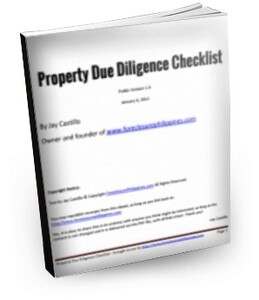





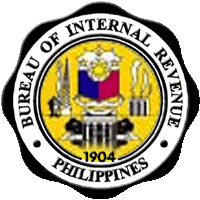

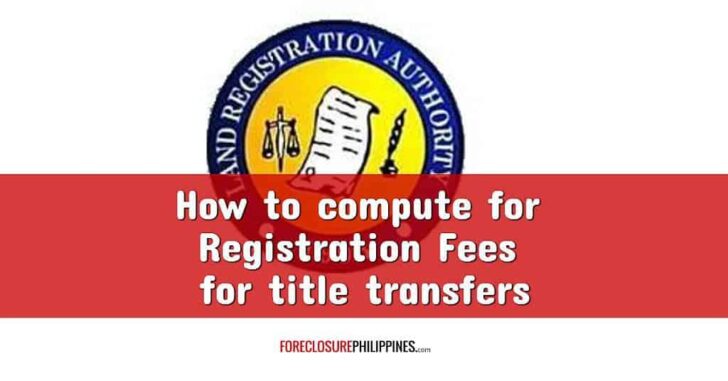
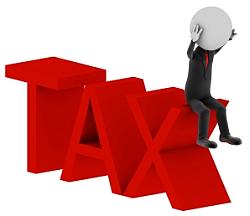

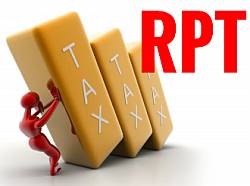
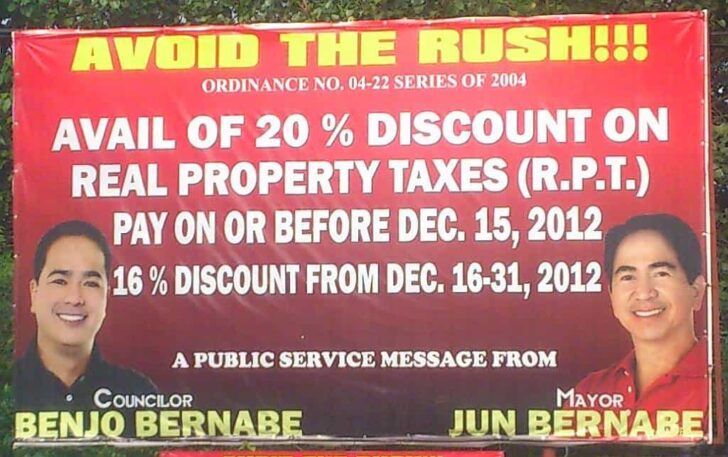


Hi,
My question is, if i sell my condominium at the same price as purchased 10 years ago from a developper, do I have to pay the CGT, or can i ask for an exemption or reduction of the 6%? Due to inflation, there is definitely a loss of capital, I have the old deed of sale without VAT to proof the purchasing price.
Thanks for your help
Hi Atty’s, my question is the CGT was not paid by the buyer and now she is contacting me 4 years later for signatures. Lot is paid in 2018 but notarized in 2019 but buyer didnt process the papers. I don’t want to pay the CGT. No agreement is written in DOAS. Can I ignore her? I’m annoyed why she’s reaching out now 4 years later. Am I liable by law to deal with her?
Btw, It’s a blessing to read your blog. This is my parents property but it’s under my name. They received the payment Not me and I didnt sign any paper that I received money. Also they are dead. Thanks for your help po!
Hi Cutie,
First of all, sorry to hear the loss of your parents, praying for you and sending my sincerest condolences.
With regard to your question, are the buyers asking you to pay for CGT? If signatures only, for me okay lang, unless mahirap na in case your are already based abroad, etc.
Technically, you can ignore them in my opinion, because you are already out of the picture (however, that may mean they won’t be able to transfer the title to their name, and they can always blame the pandemic as the cause for their failure to do the title transfer). However, I will have to double-check with my wife (she’s the lawyer, not me… hehe) if you must help them being the seller.
Hi Cutie, I just checked with my wife Cherry, she says if the DOAS is silent with who shall pay for CGT, it will be the seller’s responsibility and all the rest is for the buyer. Furthermore, Cherry said the seller is required to pay CGT because the seller is the one who owns the capital asset (the exact wording/explanation is in the tax code, according to her) . I hope this helps.
Hi! I would like to ask, what to do if the owner/seller of the land insists that I (buyer) should pay for the Capital Gain Tax while threatening me that they cannot successfully transfer the land (to me) if I won’t pay for it?
Hi Sharmaine, does it mean you are already in the middle of the transaction when you and the seller reached this disagreement about who will shoulder the CGT? If yes, please review your contract if it says anything about who shoulders the CGT.
For us, we don’t enter into a contract/transaction until things like who will shoulder taxes is clearly established for all parties and it should be written in the contract
Edit: Just wanted to add, if nothing specific was mentioned in the contract, then I suppose you can try your best to negotiate with the seller and convince then to at least split the cost with you… 50-50 would be fair I guess.
Good am Atty. Id like to ask if a buyer in an auction sale of a land by a province has to pay capital gains tax? Thank you.
Hi Rodolfo, sorry my wife Cherry is too busy to answer the comments. However, based on a previous purchase, if you buy trough a foreclosure auction, the transaction will be subject to CGT.
Hello Jay,
If the property is house and lot, do i add both floor area and Lot area before multiplying it to the zonal value to get the FMV?
Another thing, this property we’re about to purchase is under the name of the developer of the subdivision based on the TCT provided to us but we are buying it from the bank which according to the bank is that they are the representative of the owner. Is that legal?
Hi Ray, you will multiply the zonal value/sqm for that location as per BIR website to the lot area to get the zonal value. FMV refers to the values in the tax declarations (for house and lot, there will be a tax dec for the land, and another for the house).
With regard to the property under the name of the developer, ask the bank why they became the representative. If they have a legit document like a Special Power of Attorney (SPA) or something similar, then it should be okay.
Hi Sir Jay, I have a concern. I buy a foreclosed property. Who is responsible for paying the CGT for that? I’m not direct to the seller, may broker po and the realstate company is asking me to pay for the CGT. Is it normal na ako po ang magbayad?
HI Paul, most banks will shoulder CGT when you buy their foreclosed properties for sale. Unionbank is the only bank I know where the buyer will shoulder all taxes, including CGT. You should communicate with the bank directly to confirm.
Is the Foundation’s foreclosed real property (farm lot) from a loan borrower who are not able to pay and sold to private corporation an ordinary asset?
Hi Marlon, the best way to answer this is to define the actual use of the farm lot. If the foundation used the farm lot for business purposes to generate profits, then the BIR will usually classify it as a capital asset. If it is not used for business purposes and does not make money, then it CAN be considered as a capital asset.
Sir Jay, as if you are angel to me, I’ve got my optional retirement last year 2020, I’m a retired Police Officer and a license real estate broker too since 2008. I was not able to practice due to the nature of my chosen profession. We are not allowed to practice while we are in the public service. But now, I’m free from the bondage of 8-5 long hours of duty or more or even 12 hours rotation every single day.
One time, it’s so happened that I come across your web page because I tell you honestly I do not know where to start, your page reminds me of what I have learned before I got my license in real estate profession. I would like to thank you for this. God will bless you of your efforts, your health and your family.
One thing that I would like to ask you is the Property Due Diligence Checklist, I couldn’t find it in my email, would you mind accessing it to me for free? Hehehehe, I’m not abusing your goodness, but you are really so good for giving us this wonderful information in your website. Amazing. Mabuhay po kayo. God will really bless you and you family. Thank you once again.
Thank you Mr. Rey for sharing, I am so happy you are now into real estate! Please check your email, I have sent you a link to the Due Diligence Checklist as requested. 🙂
Thank you sir for sharing your expertise with us. You are such a good guy. I also salute you for granting this favor of mine. God bless you always.
Happy to help Mr. Rey, you’re welcome and thank you din po! God bless you too!
question po, pwede po bang bayaran ang cgt khit on process palang po ang owners duplicate title?
Baka hindi po payagan sa BIR, required kasama kasi sa required doscuments yung original title (original owners duplicate certificate). Eto po jung complete list of requirements:
Documentary Requirements
1 ) One original copy and one photocopy of the Notarized Deed of Sale or Exchange
2 ) Photocopy of the Transfer Certificate of Title; Original Certificate of Title; or Condominium Certificate of Title
3 ) Certified True Copy of the tax declaration on the lot and/or improvement during nearest time of sale
4 ) “Certificate of No Improvement” issued by the Assessor’s office where the property has no declared improvement, if applicable or Sworn Declaration/Affidavit of No Improvement by at least one (1) of the transferees
5 ) Copy of BIR Ruling for tax exemption confirmed by BIR, if applicable
6 ) Duly approved Tax Debit Memo, if applicable
7 ) “Sworn Declaration of Interest” as prescribed under Revenue Regulations 13-99, if the transaction is tax-exempt
8 ) Documents supporting the exemption
Hi Jay
My sister is selling her house and the proceeds will be used to build another house to stay in another area where she don’t own a house. Is she exempted in paying capital gains tax?
Hi. Thanks for posting this. I am interested in the CGT. In 2 weeks time I will have to sell my house and lot for an amount of Php 2,000,000 (300 sq.m.) and 110 sq.m floor area bungalow type of house.Perhaps that price is good enough to opt the buyer that he should shoulder na lang the CGT.
How much is the computed GCT then?
What are the penalties if you undervalue the selling price? How will the BIR compute to surcharge, interest and penalties?
Hi Jay, if a corporation sells its property used for lease and the same is subjected to 6% CGT, will the gain on sale of that real property be still subjected to corporate income tax?
my friend bought a parcel of lot(which is covered under one mother title) from someone who has no tct at all but there is a deed of conveyance. bir is asking that my friend should pay the cgt of the prior sale which involves several lots under one mother title. is this correct? thank you Sir.
anne
If there is no previous Certificate Authorizing Registration, which means no taxes were paid, yes, the BIR will ask you to pay the CGT, etc.
Hi Mr. Jay
I bought a house last year for 3 million pesos through pagibig. I paid 200 thousand pesos for its equity because only 2.62M pesos Approved by pagibig. Who will really pay for the CGT/DST, we had no agreement as to who will pay this. The seller just told me that transfer tax must be paid by the buyer. We did not talk about the CGT/DST since the seller told me I should pay for the transfer tax. So I was thinking CGT/DST is included in the transfer tax that the “buyer MUST PAY”. So I paid for everything, I even paid for the RPT of the house which was not paid since 2012. Then, the seller is asking me to pay her the remaing unpaid amount, in which I could not pay because I have spent more than 300 thousand pesos for everything (transfer tax, CGT/DST, a notatio from ROD, RPT). Sinxe we dont have the agrrement as to who will pay the CGT/DST, what shall I do? Because I really think it is unfair to pay her, because she made me believe it is the oblogation of tge buyer to pay everything per Philippines taxation Law. Since this is my first time ro purchase a house and lot I did not know about all this, until somebody told me that generally, it is the seller should shoulder the CGT/DST. Please help. Thank u.
Have a good day Sir Jay. I tried to scroll don their previous comments but I haven’t seen an issue that is related to my inquiry. In your post…I found out that filing for CGT should be made before 30 days of the issuance of the DOAS…In my case, I was not able to pay for the CGT and my DOAS was issued almost 2 months passed. What will I do whenever I can have the money to pay for the CGT? I hope you can help me with this issue…Thanks for your post…
Hi Sir Jay, I have bought a property last June 2014. What I thought would go smoothly is now giving me so much stress. It is my first time to buy a property (located here in Cabuyao, Laguna). When the property was offered to me, it was still under MBAI (a military base property developer as I understand), the seller has yet to pay her remaining installments. I have agreed to pay half the agreed price so the seller can process the release of the TCT from MBAI then the remaining half I will pay once the title is transfered to her name. But then after a month the seller came back to me and said that she was informed that the title will no longer need to be transfered to her name but will be directly transfer to my name but still 2 CGTs will be paid. So she ask for the remaining half payment which I agreed to pay so she can already pay the 2CGT then the Deed of sale has been signed and notarized. Weekly I kept on asking for feed back but she kept on saying the requirements are still being acquired then 2 months had passed and yet the CGTs were still not paid upto now (including the CGT for MBAI to seller). So this is my problem now sir, the title cannot be transffered because CGTs are not paid yet. I really don’t know what to do and I don’t have extra money to shoulder those taxes.Perhaps you can help me or refer to me someone who could assist me. BTW it is on the deed of sale that the seller will pay all taxes including transfer and doc stamps.
Hi jay, please help me,nakabili po ako ng house and lot worth 2.6 M.as I remembered sinabi ng seller n sya n daw po mag shoulder ng transfer of all documents.nag file po kami ng housing loan,and nung nalaman po nya na makakabayad na kami sa kanya sinabi po nya na kmi daw po ang mag shoulder ng CGT at title transfer,yung TAX TrANSFEr lang daw ang shoulder nya…as I read your post dapat po seller ang sagot sa CGT kasi di nman nya buisness ang mag benta ng property….pero nagdadahilan po siya na buyer daw po talaga sa CGT kagaya ng pagbili nya ng property sa Camella and SMDC…at bakit po ganun sinasabi nya na di daw po nya dineclared yung house sa municipal RD para daw po pabor saamin,para bumaba ang deed of sale..gnun po ba yun?hndi dinedeclare ang house,?at isa p po sabi pa ng seller later daw mag declare ng CGT sa BIR,pwede po ba yun? Sana po may time kyo basahin,i really need your response……thank you and God Bless
Sir if yung buyer po yung mag magbabayad ng CGT, dapat po ba under sa TIN pa rin ng seller ang payment or it doesn’t matter?
Sir Jay and Ms. Cherry, thank you for sharing your expertise! I am not an accountant and do not know much on real estate & taxation but, reading your site about CGT, CWT, DST and more has been very helpful. Hoping you can shed light on a scenario i came across recently that I don’t quite comprehend.
For background: there is a corporation that leases out real property assets, but is not listed in HULRB or other associations. These properties are the ONLY assets that the corporation has. They use these assets in their daily operations.Thus, the assets are considered ordinary. If this corporation sold these properties and the sale resulted in a loss…
1) are they still subject to tax?
2) if yes, is the base for the tax the loss?
3) will the taxes that apply to this corporation be the 30% RCIT, DST, CWT and 12% VAT?
4) do you think it’s even possible to sell a few shares (not liquidate) when everything’s at a loss??
Thank you in advance!
Hi Jay, what is the best way to get back a CGT that was erroneously paid to the BIR account instead of an escrow account? My 75-year-old mother who volunteered to take care of the payment of taxes and transfer of title of the condo unit I bought from my aunt was given wrong instructions by a BIR examiner when she inquired about availing of CGT exemption. It’s a long story, but in the end, the money was paid directly to the BIR account instead of an escrow account. When my mother inquired with the RDO about how to rectify the mistake and have the money transferred to an escrow account, she was told that it was no longer possible to do that because the money went directly to the national treasury.
Hi Mr. Castillo. I hope you can help me. I am currently in the down payment stages of a purchase I have with a real estate developer in the Philippines. I can no longer continue my purchase since I’m really having difficulty but my friend offered to just pay me back the few months DP I paid in installments. Basically he will assume balance and continue with the contract. However, I found out from the developer that they are asking me to pay 6% capital Gains Tax and 1.5% Documentary Stamp Tax to facilitate the request. I find this alarming because based on the website of BIR the title and deed of sale should be under my name. Since I am only paying for down payment naturally it is still under developer’s name. I feel helpless because I will not be able to afford the 7.5%. What can I do to contest the claim of the developer? This is so unfair but they make me feel that I have no choice but give up my unit.
Hi sir,
What’s the ruling in computing for CGT on Installment Sales? Is it the same with CWT on installment sales (buyer engaged in trade? or buyer not engaged in trade?) Thanks!
am i liable for selling a portion of my deceased mother’s lot?
Thank you for sharing, this is so helpful.
Hi jay,
recently bought a lot 33sqm with 2storey apartment type building.how will compute for the cgt? Zonal value for residential 10,100.. do i need to include the 2storey building in computing it? How. Please help.. thank you..
Hi Eugine, in my opinion, yes, you should include the zonal value of both lot and improvement(which is the building) in determining what tax base to use. You will use the highest of the 3 (zonal value, fair market value, selling price) and you indicate these in the CGT form.
Pingback: How To Get Capital Gains Tax Exemption On The Sale Of Your Principal Residence
Hi Jay! I was looking around for some info about capital gains tax and found your site, which has been very helpful, by the way. I was hoping you could enlighten me about a property I am planning to buy. The property is loaned through PAG-IBIG and we wish to assume the owner’s mortgage. What specific process should we follow and should CGT be paid by the buyer or us? They have never heard of CGT and we would like to be both clear about the transactions needed. Looking forward to your response. Thanks in advance and more power!
Hi, thanks for the very informative blog site. my mother in law have purchased a house and lot back 2004 and the deed of absolute sale was taken placed at the same year. the property thus not have a title from the previous owner. My mother in law went to the BIR to pay for CGT and DST and the computation was made by onenett and resulting to 70k tax due. my question is that my mother in law did not pay the cgt and dst because she has no money yet to pay the tax until now. what will happen if she will not pay?is the amount will be the same as before or it will increase?
Pingback: 31 Questions you need to ask when inquiring about a foreclosed property
HI Jay,
Being the seller of the property, I am now preparing the Deed of Absolute Sale. The property is actually mortgaged with the bank and has still a balance. For purposes of Capital Gains Tax computation which is based on the FMV/Zonal Value from the BIR or the Selling Price, whichever is higher. Can I use the mortgaged amount of the property as my Selling Price in the Deed of Absolute Sale being higher than the FMV/Zonal Value. Please kindly help me on this matter.
Thank you and God bless.
Ace
Hi Jay,
I have a question. If I want to transfer the title of a property, still at a preselling stage, to someone, will I be charged of Capital Gains Tax?
I am now on the 26th month of paying the installment of an Avida property. The number of installments is 36months, but I wanted to opt out for monetary reasons, hence the decision to sell to someone else.
The problem is Avida asked me to pay Capital Gains Tax right away. My understanding of CGT is you only pay it once you have the Deed of Absolute Sale already, or if you have paid all the monthly amortizations but before the DOAS is issued.
My friend’s experience with DMCI is they only charged her a Transfer fee for a change in name amounting to PhP5,000 when she assumed a property from someone else during the pre-selling stage.
My question is: Is Avida correct in charging my CGT at this stage of the transaction when what I have is still the Contract to Sell and the unit will only be fully paid next year?
Thanks very much for you help.
Regards,
Shiela